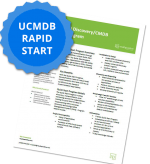Improving Agile Teams’ Testing Coverage with HP Sprinter
By: Matt Angerer
As a result of increased demand for both mobile and native software, faster development and delivery is more important than ever. The software industry must respond quickly to an ever-changing environment, whilst avoiding the trap of sputtering inefficiency. Forming Agile teams during development offer a popular way to decrease development time while simultaneously supporting faster field delivery.
Within the Agile model, organizations strive to deploy a high-quality product as quickly as possible, while also allowing ample room to meet changing demands and requirements. Yet there are challenges to be considered with Agile teams, including the dynamic nature of the approach that makes it more difficult to establish a highly focused testing process.
A common challenge of this approach is that Agile has historically appealed only to development teams. But for the greatest level of efficiency, every department within the organization must learn to adopt Agile guidelines. This transition from the traditional Waterfall method introduces a number of challenges for the QA department. Chief among those challenges is the need for development and QA teams to work more closely together than in the past, often requiring that QA actually becomes integrated within the development team itself. Feedback and cooperation between both the development and QA teams is essential to successful agile adoption.
QA must also recognize that there will be less time available for testing and the presentation of status reports. Testing must become more frequent to meet a rapidly iterating development schedule. As a result, key stakeholders often find themselves in situations where they must fill varying roles.
Test Driven Development (TDD) is now becoming increasingly common. In this approach, developers write the test first and then write the code necessary for a passing test scenario. While TDD does offer the benefit of increasing awareness for code that is both high quality and reliable, it’s usually too rigid for complex scenarios.
Exploratory testing can offer a wealth of benefits, especially in situations where immediate feedback regarding a feature or functionality is required. Organizations may also find exploratory testing to be beneficial when it’s necessary to identify critical bugs in the least amount of time, or when new software needs to be sped up. Exploratory testing may also prove to be advantageous when there is a need to improvise using scripted tests, improve upon existing tests, or write new tests. Exploratory testing tends to offer greater levels of efficiency in Agile projects because it eliminates the need to invest in writing, preparing, and approving a test case before the scenario actually begins. Consequently, the testing process becomes much faster and flexible.
HP Sprinter is an efficient and easy-to-use exploratory manual testing solution for Agile teams. Business Analysts or SMEs can install HP Sprinter on their workstation and augment the Quality Assurance (QA) user stories of your Agile sprint by “pointing and clicking” their way through exploratory test coverage. The tool logs and records the tester’s actions, saving them as a formal test case in HP ALM or even converting them into an automated test by exporting out to an XML file that imports into HP UFT.
Better still, HP Sprinter eliminates the testers need to open HP ALM or Quality Center to log defects. As defects are encountered during an exploratory test run, HP Sprinter takes note of all the information pertaining to the bug (including screen shots or video) and uploads this all into the ALM or Quality Center repository upon finishing the test run!
Introducing HP Sprinter on your Agile Team is a great way to expand test coverage while expediting the development of automated UFT scripts. As your SMEs point and click their way through an Application Under Test (AUT), they can quickly export an XML output file and provide it to your Automation Engineering Team. The disconnect between “the business” who knows the AUT at it’s root level and your Automation Engineering Team is completely eliminated with both HP Sprinter and UFT in beautiful synchrony.
Be sure to contact our ALM experts with any questions you may have as you transition into a more efficient Agile framework.
Subscribe for the latest RP Blog Updates:










